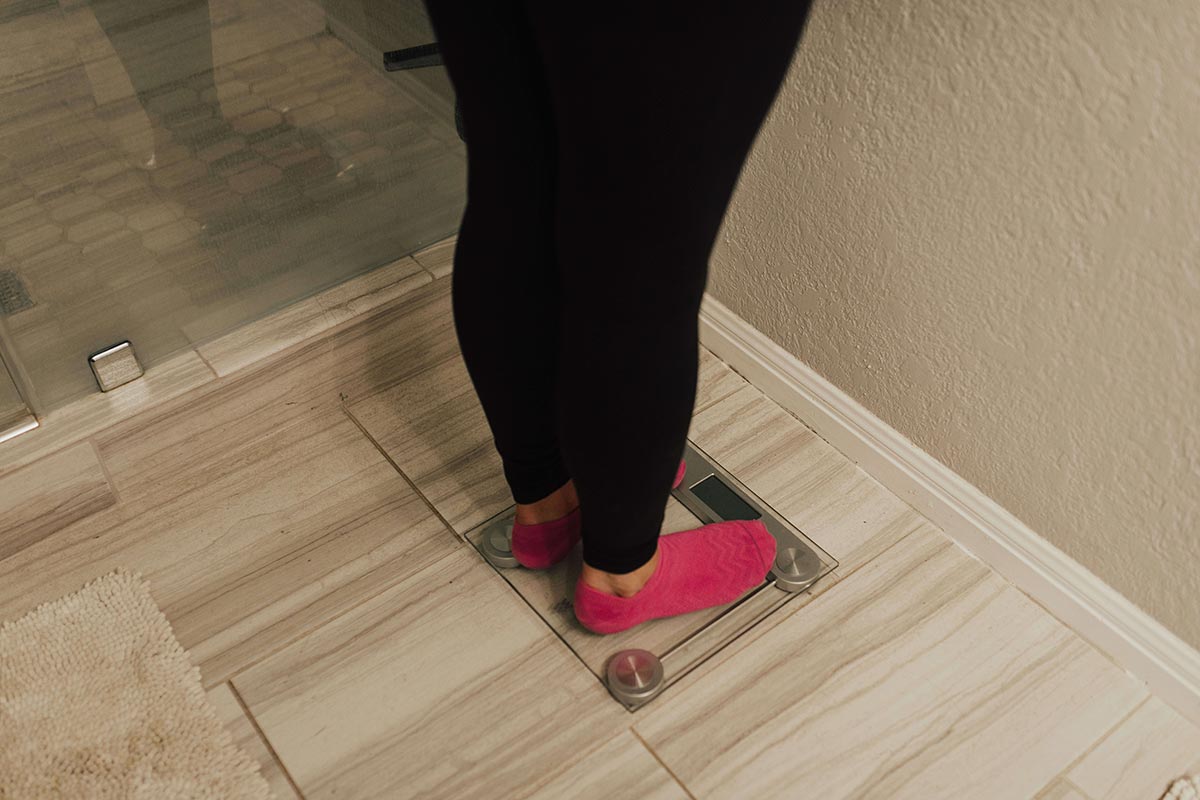
Women are unique, so the best approach to fat loss for women is unique as well.
As a general rule, women have more body fat than men. Of course, this isn't always the case, but this trend seems to be the most common when looking at the population as a whole. Women also tend to store more fat in their bum and thighs, whereas men usually have more belly fat. Again, not always the case, but another common trend. There are different theories on why women have more body fat and store it more quickly than men. Still, the most widely accepted involves evolutionary benefits and hormone levels.
Today, we're diving into specific fat loss tips for women, setting expectations for healthy body fat percentages, and distinguishing between cardio and resistance training in terms of what works best for weight loss.
Women’s Hormones and Fat Loss
Women have more estrogen than men, so a woman's body can support a healthy pregnancy. While estrogen is a helpful hormone for women's health, it also promotes fat storage [1]. This can make it harder for you to lose body fat.
Advertisement
Even if kids aren’t in your plan or you’re “done having kids” earlier in life, your body doesn’t know this. It will still cycle your hormones as if you want to optimize your body for monthly fertilization.
During and after menopause, changes in estrogen, progesterone, and other hormones can also increase fat storage, especially around the midsection, and can lead to weight gain or difficulty losing weight.
But while fat loss for women can be a little more complex than for men, several methods can increase your body's ability to burn fat and help you lose weight.
What’s a Healthy Body Fat Percentage for Women?
When trying to lose fat, there isn't one magical body fat number you need to aim for.
Healthy body fat percentages are given in ranges; for women, anything between 25-31% is considered acceptable, while 32% or higher is classified as obesity [2].
Advertisement
Women who are physically fit and work out regularly and consistently typically have a body fat percentage of 21-24%.
Keep in mind that when losing fat, the goal isn't to lose as much fat as quickly as possible. Your body needs some fat to function correctly. This body fat is called essential fat; for women, it typically ranges from 10-13% [2].
If you aim to optimize performance, more body fat can be advantageous. Feeling your best in the gym and during recovery requires more calories, lower stress levels, healthy hormones, plenty of quality sleep, and a diet rich in high-quality food. For more information on losing fat and gaining muscle, check out this article.
It is also important to remember that the “best” body fat percentage for you is likely the one that allows you to enjoy your life, feel healthy and happy in your skin, and that feels sustainable in the long term.
While there may be times in your life when you want to “lean out” for a special occasion or need to drop weight for an athletic competition, most people generally can’t live at VERY lean levels for long periods without sacrificing health, performance, their social life, or a combination of the three. A lot of mindset work goes into finding the balance that works for you, and a 1:1 nutrition coach can help you work through it.
Advertisement
How Long Does It Take for Women to Lose Body Fat?
Now that you know what healthy body fat levels look like, let’s set some realistic expectations for you before jumping into the best ways to promote fat loss for women.
There are several factors, including overall body composition, hormones, and age, that affect how quickly you can lose weight. But as a general rule, you should only expect to lose about 0.5-1% of your body fat each week or 2-4% each month at most.
On a week-to-week basis, this typically results in about 0.5-1 lb of average weight loss per week. Finding your average weight loss each week requires a consistent morning weigh-in and comparing the average of your weights over the past seven days on the same day. (Grab our best practices for measuring body composition here.)
That means if you're currently at 43% body fat, it could take at least three months to get into the targeted range of 31% or lower. And that's with lots of consistency and dedication.
Advertisement
At WAG, we consider “optimal consistency” ending within 5g of a protein goal, 5g of a carb goal, and 2g of a fat goal. From here, the more adherent you are to this level of consistency, the faster you’ll see results.
As you start your fat loss journey, keep those numbers in mind. And don't get discouraged if you only see minor changes. These small changes add up to significant results as you continue on your path. Are you curious about how to measure your body fat percentage and what it takes to achieve your lean body goals? Check this out!
How to Boost Fat Loss for Women
Diet and exercise are the foundation of fat loss, but they're not the only things you need to consider. When trying to reach your weight loss goals, follow a comprehensive program that addresses your mental health, sleep cycle, diet, and exercise.
Addressing these areas will not only give you more energy and make you feel better overall. They also help balance your hormones, which play a role in fat storage.
Advertisement
1. Add Resistance Training to your Cardio
Some women fear resistance training (also known as strength training) because they think it will build muscle and make them look too bulky. But weight training can help you slim down by burning fat while increasing your lean muscle mass.
In one study, a group of overweight women started using resistance bands three times a week for 12 weeks. They lost a significant amount of body and belly fat while building lean body mass [3].
When you build lean body mass, it helps improve your basal metabolic rate (BMR), which is the number of calories your body burns at rest. Having a higher BMR makes it easier to lose fat and maintain a healthy body weight.
If you’re not already, lift weights a few times a week and do cardio.
2. Switch Up Your Workouts
If you feel like you’ve reached a standstill regarding fat loss, you may benefit from switching up your exercise routine a little bit. For example, if you do a lot of high-intensity training like CrossFit, try also to incorporate some progressive overload into your resistance training.
Advertisement
This means cycling through repetitions while gradually increasing resistance each week. For example, do eight repetitions of each exercise on Monday, ten repetitions on Wednesday, and 12 repetitions on Friday. Repeat this cycle every week, adding more weight or resistance each time.
If you don’t already, you may also benefit from incorporating interval training, a form of exercise where you alternate short bursts of high-intensity exercise, such as sprinting, with longer periods of low-intensity exercise, like jogging, into your routine.
When doing this training, you spend about a minute or so working as hard as you can to increase your heart rate. Then, reduce your effort for a couple of minutes to recover before starting again.
Interval training seems to be the most effective exercise for decreasing overall and belly fat [4, 5]. It may also increase your metabolic rate so you burn more calories throughout the day.
While you can do regular aerobic and cardio exercise, incorporate interval training a few times a week for optimal fat burning.
Advertisement
3. Prioritize Healthy Eating and Protein Intake
Have you ever heard the phrase "abs are made in the kitchen"? That's a really catchy way of saying your diet has a significant impact on your body composition. Even if you’re hitting the gym or the CrossFit box regularly, you won't see much progress if you ignore what's on your plate.
That doesn't mean you have to follow a strict diet or do daily calorie counting, but you should make healthy choices about your food intake as much as possible.
Ensure you're getting lean protein, lots of fiber-rich vegetables, and, yes, even healthy fats, like olive oil, avocados, and grass-fed butter, at each meal.
Protein is the most satiating macronutrient, so it's essential to eat enough and spread your intake throughout the day. This will help keep you full and help you get rid of body fat and retain lean muscle mass.
Protein also plays a big role in muscle maintenance and recovery. The more muscle you have, the more calories you burn at rest, which can keep the fat-burning process going far after your workout.
Advertisement
Aim for 20 to 30 grams of protein per meal. To put this in perspective, 4 ounces of chicken breast contains about 32 grams of protein [6].
Vegan or vegetarian? Here are some of the best protein sources to try.
4. Pay Attention to your Macros
While calories aren't the only thing that matters with weight loss, you do need to pay attention to your overall calorie intake. Excess calories are stored as body fat, and if you overeat often, you'll have a much harder time losing fat.
On the other hand, if you're in a calorie deficit — or you're consuming fewer calories than your body needs — you're more likely to lose excess fat.
A great way to ensure you stay within your target calorie range is to track your macros and create a meal plan you can follow each week. Tracking your macros prevents overeating and helps optimize your intake of micronutrients, including vitamins and minerals, since different types of foods offer unique benefits.
Advertisement
Remember that nutrition is never one-size-fits-all — some people need more carbs, while others need a high-protein diet. You can calculate your starting macros for free here. Take time to understand what works best for your body and work with an experienced coach for optimal results.
5. Set Aside More Time for Self-Care
Women tend to put a lot on their plates. Taking care of adult life, going to work, and sometimes looking after loved ones, plus all of the other responsibilities you have, can take a toll and add a great deal of stress to your life.
This type of chronic, never-ending stress isn't only mentally harmful. It can also increase levels of a hormone called cortisol. When cortisol levels are high, it can make it harder to lose fat and contribute to weight gain, especially in the form of belly fat.
While it's impossible to eliminate stress, it's essential to take the necessary steps to manage or reduce your stress levels. There are many ways to approach stress relief, so find the best combination that works for you and set aside some non-negotiable time to practice it regularly.
Our biggest self-care tip is to let go of what works for others and listen to what your body tells you. If journaling isn’t your thing, try walking or coloring. Not a meditator? Grab a journal and write.
Advertisement
Getting stuck thinking there is a “right” or “best way” to de-stress can cause more stress. Hone in on what works best for you and go with it.
6. Prioritize Your Sleep
Getting enough sleep sets you up for a great day by allowing your body to rest and recover, and helps improve your energy levels. But sleep is an essential part of your weight, too.
Like high-stress levels, a lack of sleep can increase cortisol. Sleep also disrupts two other hormones—ghrelin and leptin. Ghrelin is the hormone that tells you you're hungry (think, “stomach grumble ghrelin”), while leptin is the one that signals that you're full.
Sleep deprivation increases ghrelin levels while simultaneously decreasing leptin levels. This hormone cascade can always leave you feeling hungry, even when you've just had a meal.
One study involving 245 women found that getting enough quality sleep, defined as at least seven hours per night, increased the chances of weight loss by up to 33% over six months [6].
Advertisement
Conversely, women who sleep fewer than five hours per night are likelier to gain weight [7].
Outside of the impact on your hunger and dress hormones, less sleep also decreases your energy levels. When you have more energy throughout the day, you push harder in your workouts, and your non-exercise activity thermogenesis (NEAT) also increases, which can lead to higher overall calorie burn throughout the day and, therefore, increased fat loss.
To lose fat as quickly as possible, prioritize your sleep schedule and aim for at least seven hours, preferably eight, of high-quality sleep each night.
Final Thoughts on Fat Loss For Women (And What Comes Next)
There are several factors to consider when optimizing fat loss for women. While you can start implementing this advice on your own, if you’re new to a healthy lifestyle, it can feel overwhelming to navigate without any help.
Advertisement
If you'd like some guidance, a WAG nutrition coach can help design a weight loss program tailored to your individual needs. We'll work with you to get to know your body, goals, and lifestyle, so you can lose weight in a sustainable and maintainable way.
Lindsay Boyers
Schedule a Free Intro Call
Working Against Gravity has led the macro tracking and health space for over a decade. Our team doesn’t just understand the science of nutrition—we’ve spent years mastering the art of tailoring it to fit your life. That means no cookie-cutter plans, just real strategies that have worked for over 30,000 people.
Schedule a free call with our team to learn how working with a 1-on-1 WAG coach will help you reach your goals.



